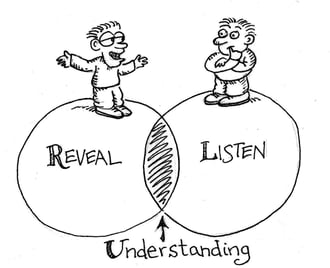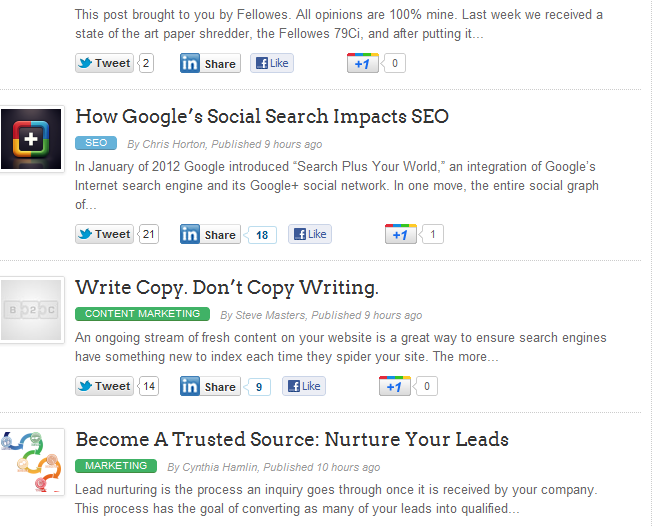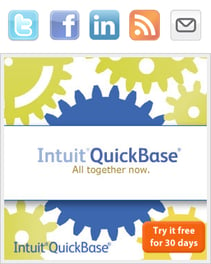For many brands that blog, content is a fairly straightforward decision. Many conversations regarding blog content focus on quantity. How often are you posting? How many of your employees are blogging? While quantity is important, quality is essential. Without quality, you can post all day, but there's no guarantee that anyone will read your content, in fact, if you don't have quality content, it's almost guaranteed that no one will read it.
- Really share information. A pitfall that many brands find themselves in is their corporate blogs becoming little more than a space to curate press releases and product specifications. Rather than communicating like a traditional corporation, allow your corporate blog to transcend standard media, and actually add value for your customers. Your brand should be using your blog for thought leadership, adding value for existing clients, and to attract new customers!
How can your brand avoid (or climb out of) this pitfall? The simple answer is to start sharing your knowledge and expertise. Brands who share more information can benefit more in the long run. According to Marcus Sheridan, your focus should be on adding value, not hoarding information. He cites this in a blog post detailing the practices of the top corporate blogs in the world.
Freshbooks shows great insight by providing their audience with advice on topics such as how to hire an accountant. Could potential customers hiring an accountant eliminate a need for their software? In certain situations, perhaps so. However, Freshbooks has decided to share this pertinent information with their customer base, and are all the better for it! Marcus has another great point, "they push customers out of the sales funnel as much as they push customers down the sales funnel, all for the pursuit of building the right tribe and creating the right clients." If your potential customers aren't a great fit for your product or service, and would be better served in some other way, they will eventually come to this conclusion on their own, and you will both benefit from realizing this upfront.
The takeaway: Don't be afraid to inform your customers and potential customers, even if it seems risky at times, you'll find it to be well worth the trouble.
- Write for your audience, not your brand. Of course, once you do start sharing more "intimate" details about your company and its expertise, you have to remember to keep your content relevant. Debra Murphy asserts that "It’s not about you, it’s about what your audience needs." Many brands are so focused on themselves and showcasing what they can offer, that all they end up offering is a text commercial (which is even less appealing than a normal commercial). Customers don't come to your blog to be advertised at.

This one is a bit more complicated to fix, because there are at least two important steps. First, you need to understand what your customers want and need, and then you should share information that can help them meet those needs. If you really want customers and potential customers to read your blog, then write to suit their interests, not just your own. It sounds so needlessly simple, but a cursory glance at the average corporate blog shows that many brands don't understand this.
37 Signal's Signals vs. Noise blog sets aside product specifications to speak about multiple topics such as business, writing, design, etc. Through focusing on advising their readers rather than reciting press releases and advertisements at them, 37 Signals has gained over 100,000 RSS subscribers!
The Takeaway: It can benefit you to open up to a wider range of topics and interests, even if they are not directly in line with your current business model. You never know who your content may attract, and the more people it's in front of, the more potential customers you're reaching.
- Be consistent. Even if you have quality content, you should always bear in mind that it is easier to maintain your readership after it's established, rather than reaching new readers. Both of these goals can be reached by maintaining a consistent content schedule. If you do not consistently post new content, your current followers will likely lose interest, to new visitors your blog will appear stagnant, and worse of it will seem as though your brand is not really committed to reaching out to your customers.
Humans are creatures of habit, we prefer things that we can expect and depend upon, and an easy way to appeal to your current followers and any prospective readers is to regularly post new content, preferably on a predictable and dependable schedule. This is not always easy, and how often you post should depend upon many factors, such as the size of your organization and availability of your staff, for example. The important thing to remember is that no matter what schedule you choose, that you commit to it and follow through.
Business 2 Community sticks to a tight and consistent schedule, posting multiple times every hour! Of course, you don't have to post that often, but the point is that once you do choose a schedule, no matter how often or how sparsely you post, you should conform to your content schedule.
The takeaway: When planning your content schedule, be sure that you will have the time and resources to keep up with the schedule you choose.
- Keep content concise and digestible. The Social Marketing Project stresses the importance of concise content. It is not your goal to write a novel, or to tie up your reader's entire afternoon on one post. When you visit a blog that is a wall of long text with no graphics, do you feel encouraged to stay and read the post? Does it really grab your attention? No one likes digging out the information they're looking for, so make it easy by leaving out the fluff, and making the "meat and potatoes"of your content easy to find.
A simple way to liven up any post with some visual appeal and break up the wall of text is to add some images. Attractive and colorful pictures will catch a reader's eye while also dividing up your content so it seems more digestible. You should also consider including bulleted lists to add clear organization and allow readers to quickly and easily take away the key points of your content if they just want to skim. While skimming may influence your metrics and make it seem as though people spend less time on your blog, again, the point isn't to tie your readers down for an extended period, but rather to provide value. If your readers are able to quickly take away your key points, then they're getting the information they need without wasting time, which is double the value if you ask me.
Intuit's QuickBase blog exemplifies concise, digestible content. Their content regularly includes lists, stays on topic, cuts out the fluff, and includes visual content to liven up the page and space out the content. This makes it easy to understand the key points quickly, without having to read the entire article.
The Takeaway: Rather than trying to trap your audience in a maze of content for the benefit of fattening metrics, make it easy for readers to quickly find what they're looking for. At that point, they can get out if they like, but with quality content that's easily accessible, they're likely to stick around or return later when they have more time.
- Provide clear, actionable steps. Have you ever read an opinion or editorial piece that criticizes someone else's methods, but offers no superior alternatives? Or perhaps a vague how-to article which glosses over too many details and leaves you more in the dark than when you started? It's frustrating to be offered valuable information, and not have it backed up with any clear suggestions of implementing that information in your own business (or life). Knowledge is indeed power, but it's always nice when knowledge includes cliff notes on how to utilize it.
How do you ensure that the knowledge you share with your readers is not only useful, but also adaptable to their situation? If you're discussing an issue you disagree with, or believe that something could be done better if done a certain way, don't just share your opinion or the basic information and leave it at that. Give your audience clear steps that they can immediately adopt to increase their success. What could be more valuable than that?!
The LifeHacker website is a great example of content which is useful, visual, and actionable! They post articles which offer practical advice for every day life, how-to articles, product recommendations, and more, and you never see a LifeHacker article that does not include at least one picture. The content is well-written and to the point. The nature of the content makes it very actionable, teaching you interesting life skills such as how to save money on your monthly bills or how to get in shape in 20 minutes a day.
The Takeaway: If you really want your readers to love your content, it needs to be more than just informative, it also needs to be actionable, and it doesn't hurt if it's easy on the eyes as well.
As you may have noticed, while the examples I used above are strong in a couple of areas, for the most part there are not many blogs out there that can truly say they meet all of these standards. In fact, many promising blogs I found were eventually disqualified as examples because while some of their posts met the criteria, there were enough posts that did not qualify that I felt it would only serve to confuse our readers if I included them. Even some of the best blogs lose consistency in their quality, sometimes far more often than they should. If you are able to consistently meet these standards with your posts, then you're sure to grow your audience, all you need now is the patience and persistence to keep blogging away in the meantime.
Tags:
Content MarketingFeb 24, 2012











